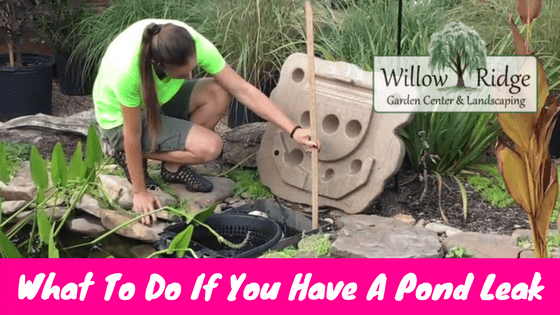What To Do If You Have A Pond Leak
I think I have a pond leak! What do I do if I am losing water? Calls about leaks are a standard in the pond industry. It should be no surprise that nature has a mind of its own. So, it is normal for dirt to settle, rocks to move, and water to cut its own unexpected path. Of course, we are always happy to help. But I am sure as customers you would like to be able to save money and time by taking a few steps before you call us. These easy steps will keep a professional from having to travel back and forth to visit your water feature over a span of several days. It might even save you a service call altogether.
Finding The Leak
If you think you are losing water, the first thing you want to do is turn your water feature off. Make sure you mark the water level so you can tell how fast it is dropping. If you have fish, you may want to put an aerator system in if you don’t already have one. Keep a close eye on them to make sure they don’t get stuck as the water level drops. After 24 hours check to see if you have still lost water. If so, then you know the leak is in your pond or pondless pit and not in your stream or waterfall.
If you did lose water overnight then you need to leave the feature off, stop refilling it. Start checking the water level every day until it stops dropping. When your water level stops dropping, then you can start looking for the leak at the water level. You could also call a us take a look at it for you.
If after the first 24 hours without running you did not lose any water then your leak is somewhere in your stream or waterfall, or in your plumping. At this point you can call us to come for an inspection, or you can look up and down the edges of your stream for damp earth or standing water.
Sometimes a leak is as simple as some overgrown plants pushing your liner down. Sometimes dirt settles or washes out and you just need to pack it up a little to lift your liner above water level. So, before you panic, take these few simple steps to get a better understanding of the situation. But we are always here to help, so don’t get in over your head either. Catch you downstream.
Watch This Video To Learn More

